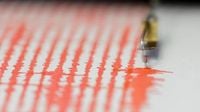On Friday, July 25, 2025, a magnitude 6.6 earthquake rattled the South Pacific near the Polynesian islands of Wallis and Futuna and Tonga, as well as the island nation of Samoa. The quake struck at 11:37 a.m. local time, centered deep beneath the ocean at a depth of 195 miles (314 kilometers), according to the U.S. Geological Survey (USGS).
The epicenter was located approximately 110 miles (177 kilometers) southeast of Mata-Utu, the capital of Wallis and Futuna, and about 273 miles (440 kilometers) southwest of Apia, Samoa's capital. Despite the quake's strength, no immediate reports of injuries or structural damage emerged, and no tsunami warnings were issued by the Pacific Tsunami Warning Center (PTWC) or Samoa Meteorological Services.
Jarrett Malifa, a staff member at the Samoa Observer news website, confirmed via email that no damage or injuries had been reported. He also noted that he and his colleagues had not felt the earthquake, underscoring the depth at which the quake occurred and its limited surface impact.
The USGS's impact assessment suggested that the likelihood of casualties or economic damage was low, estimating that around 12,000 people may have experienced weak shaking. This outcome is consistent with the quake's considerable depth beneath the ocean floor, which tends to dissipate seismic energy before it reaches the surface.
The earthquake occurred along the highly active Australia-Pacific plate boundary, a tectonic region known for some of the fastest subduction rates on Earth. Here, the Pacific Plate subducts westward beneath the Australian Plate. This zone includes the Kermadec and Tonga trenches and is infamous for frequent, powerful earthquakes. Since 1900, dozens of magnitude 7.5 or greater quakes have struck this region, some of which have triggered destructive tsunamis.
Samoa sits on the Pacific "Ring of Fire," an arc of seismic faults encircling the Pacific Ocean where earthquakes and volcanic activity are common. This geologically volatile setting makes the region prone to seismic events. Notably, in 2009, two large earthquakes struck midway between Samoa and American Samoa, a U.S. territory. Those quakes generated tsunami waves that tragically killed at least 192 people across Samoa, American Samoa, and Tonga.
Given this history, the recent earthquake's lack of a tsunami warning was a relief to residents and authorities alike. The Pacific Tsunami Warning Center in Honolulu and Samoa Meteorological Services both assessed that there was no tsunami threat following the quake.
The USGS, a scientific agency under the U.S. Department of the Interior, plays a key role in monitoring earthquakes globally. It operates the National Earthquake Information Center (NEIC), which tracks seismic activity and issues immediate reports on earthquake location, depth, and magnitude to inform emergency response and public safety. The agency collaborates with international partners to improve global earthquake monitoring and hazard assessment.
While the July 25 earthquake was significant in magnitude, its deep oceanic origin and location away from heavily populated areas minimized its impact. This contrasts with shallower quakes or those closer to shorelines, which tend to cause more damage and pose greater risks of tsunamis.
Residents of Samoa and surrounding islands remain vigilant, understanding the seismic risks inherent to their location. The recent event serves as a reminder of the powerful natural forces at play beneath the Pacific Ocean and the importance of continued monitoring and preparedness.
In summary, the magnitude 6.6 earthquake that struck near Samoa and the Polynesian islands of Wallis and Futuna and Tonga on July 25, 2025, caused no apparent damage or injuries. Its deep focus beneath the ocean and location along a well-known tectonic boundary underscore the dynamic geology of the region. Thanks to timely assessments and warnings, the threat of a tsunami was effectively ruled out, allowing communities to breathe a sigh of relief.






